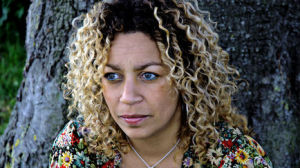 I’m super-excited to tell you about a new book that is on shelves TODAY! You don’t want to miss this memoir–Where the Dead Pause and the Japanese Say Goodbye– by writer Marie Mockett who is hapa. She has written a really touching story about coming to terms with loss after the Japanese earthquake and tsunami as she returns to Japan where her family’s Buddhist temple has suffered from the damaged nuclear reactor nearby. It’s a wonderful book that you don’t want to miss.–Heidi Durrow
I’m super-excited to tell you about a new book that is on shelves TODAY! You don’t want to miss this memoir–Where the Dead Pause and the Japanese Say Goodbye– by writer Marie Mockett who is hapa. She has written a really touching story about coming to terms with loss after the Japanese earthquake and tsunami as she returns to Japan where her family’s Buddhist temple has suffered from the damaged nuclear reactor nearby. It’s a wonderful book that you don’t want to miss.–Heidi Durrow
Driving the King by Ravi Howard AVAILABLE NOW
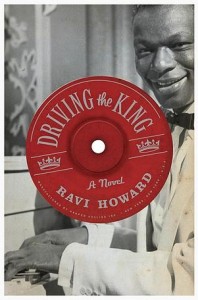 If you are looking for another great read, then Driving the King by Ravi Howard is it! It’s the story of a young war veteran who returns home from Europe and ends up driving Nat King Cole as he tours. This is a poignant and powerful story about race and class in 1950s America.–Heidi Durrow
If you are looking for another great read, then Driving the King by Ravi Howard is it! It’s the story of a young war veteran who returns home from Europe and ends up driving Nat King Cole as he tours. This is a poignant and powerful story about race and class in 1950s America.–Heidi Durrow
2014 Festival Recap: Writing Poetry with Aaron Samuels
Writing Yourself Into the Poem
Award-winning poet and performer extraordinaire Aaron Samuels led a group of writers with a great workshop at the 2014 Mixed Remixed Festival.
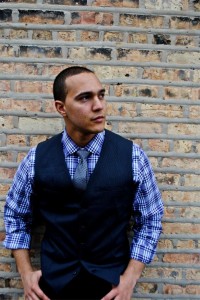 From Shakespeare to Nikki Giovanni to Mos Def to Drake, artists have used their respective mediums to express the complexities and nuances of identity. In this workshop, Aaron leads a discussion about how both classic and contemporary writers have tackled identity multiplicity and exploration in their work. Then using the poems discussed as writing prompts, participants write their own poems discussing one or multiple aspects of their complex identity. Participants will then share and discuss the poems written during workshop. Participants do not need to come to the workshop with writing prepared, but should come ready to write!
From Shakespeare to Nikki Giovanni to Mos Def to Drake, artists have used their respective mediums to express the complexities and nuances of identity. In this workshop, Aaron leads a discussion about how both classic and contemporary writers have tackled identity multiplicity and exploration in their work. Then using the poems discussed as writing prompts, participants write their own poems discussing one or multiple aspects of their complex identity. Participants will then share and discuss the poems written during workshop. Participants do not need to come to the workshop with writing prepared, but should come ready to write!
Aaron Samuels, raised in Providence, Rhode Island by a Jewish mother and a Black father, is a Cave Canem Fellow and a nationally acclaimed performer. His work has been nominated for a Pushcart, featured on TV One’s Verses & Flow, and has appeared in many journals including Tidal Basin Review and Muzzle Magazine.
2014 Festival Recap: Workshop in Voiceover Techniques with Rayme Cornell
What Does Your Voice Sell: McDonald’s or Mickey D’s or Both?: Capitalizing on “Ambiguity” with Your Voice
with Rayme Cornell
By far one of our most popular workshops was led by Professor Rayme Cornell of UNLV. Rayme led a group of close to four dozen students in voiceover techniques she’s used and taught for the past 20 years as a successful voiceover artist, professional actor, and university teacher.
In voice-over, knowledge is power. What are your voice signatures? Who is your voices’ demographic? Is your voice better suited for selling coconut water or cough drops? Does your voice come across as an everyman or a wild child?
During this workshop, actor, voice-over artist and theatre professor Rayme Cornell helped hone in on what your voice does best. Demographics, product categories and brands will be considered to help uncover where your voice connects. Be prepared to get behind the mic and find out what your voice sells.
Rayme Cornell has worked in film, television, Off Broadway and with some of America’s most prestigious Regional Theatres including, The Old Globe, The Alley, Crossroads, The Vinyard, Philadelphia Theatre Company, Primary Stages, The O’Neill, Missouri Rep., Unicorn Theatre and with New York’s famous Acting Company. She is also known for her extensive voice-over work representing such products as L’Oreal, Ford, Dunkin Donuts, Cingular, Singulair, Lifetime, WE, Oxygen Network, USA Network, MTV, VH1, BET, ESPN, History Channel, Discovery Channel, Republican and Democratic Party Candidates and many more.
Rayme is an Assistant Professor in the Theatre Department at UNLV. She is a member of the Screen Actors Guild, American Federation of Television and Radio and Actors Equity Association. She received her B.A. from the University of Nevada Las Vegas and her MFA in Acting from the University of Missouri Kansas City in association with the Missouri Repertory Theatre.
2014 Festival Recap: Global v. Universal: Writing & the Woman of Color
Global v. Universal: Otherness & Writing the Female Writer of Color
Led by Moderator Ananda Ilcken our panelists: Francesca Biller, Alexis Wilson, and Janet Stickmon enjoyed a wide-ranging conversation about what it means to be a female writer of color and write a “universal” story.
Francesca Biller
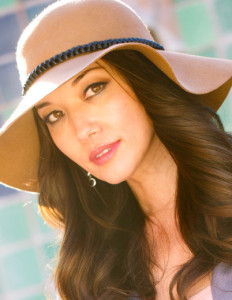 Francesca Biller is an award-winning investigative journalist, poet and humorist. She writes about the philosophy of cultural identity and about her interesting and exotic experiences as a Japanese Jewish girl who grew up in Los Angeles and Hawaii with a family of artists, designers and writers. Biller is the recipient of The Edward R. Murrow award and two Golden Mike awards for investigative reporting. Her work has been featured in national publications, radio, and television, including CBS, The Wall Street Journal, The Chicago Sun Times, The Huffington Post, The Jewish Journal of Los Angeles, and many others. Essays about her Japanese Hapa identity were included in the “Hapa-Japan, Visible and Invisible” exhibit at the Japanese American National Museum in Los Angeles in 2013. Currently, she is writing three books, including a novel about the 442nd Battalion of World War II, a collection of poetry, and a book of humorous autobiographical short stories. As a performer, she has also appeared on radio and television, and is happily working on a pilot about the history of Jewish comedy for a network.
Francesca Biller is an award-winning investigative journalist, poet and humorist. She writes about the philosophy of cultural identity and about her interesting and exotic experiences as a Japanese Jewish girl who grew up in Los Angeles and Hawaii with a family of artists, designers and writers. Biller is the recipient of The Edward R. Murrow award and two Golden Mike awards for investigative reporting. Her work has been featured in national publications, radio, and television, including CBS, The Wall Street Journal, The Chicago Sun Times, The Huffington Post, The Jewish Journal of Los Angeles, and many others. Essays about her Japanese Hapa identity were included in the “Hapa-Japan, Visible and Invisible” exhibit at the Japanese American National Museum in Los Angeles in 2013. Currently, she is writing three books, including a novel about the 442nd Battalion of World War II, a collection of poetry, and a book of humorous autobiographical short stories. As a performer, she has also appeared on radio and television, and is happily working on a pilot about the history of Jewish comedy for a network.
Alexis Wilson
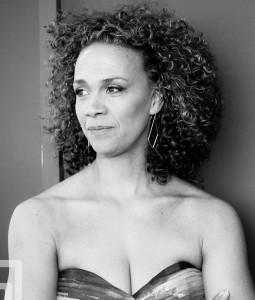 As a writer, Alexis Wilson has committed herself to the challenging and healing work of sharing her life story through her riveting memoir, Not So Black and White. As a speaker, she is motivated to share her personal story of a “show-biz” upbringing, abandonment by her mother and her non-traditional family. As an artist, Alexis has been fortunate to have worked as a professional dancer with some of the greatest talents in the theatre and dance world. After dancing, her interests and experience led her to teaching dancers, and casting national commercials and Broadway shows. She worked as a choreographer’s assistant and as a contributing writer for several published books. Her need and personal fulfillment to help others has involved her with many fundraising events that she either created or played a major role; whether for people in need of food or those affected by AIDS.
As a writer, Alexis Wilson has committed herself to the challenging and healing work of sharing her life story through her riveting memoir, Not So Black and White. As a speaker, she is motivated to share her personal story of a “show-biz” upbringing, abandonment by her mother and her non-traditional family. As an artist, Alexis has been fortunate to have worked as a professional dancer with some of the greatest talents in the theatre and dance world. After dancing, her interests and experience led her to teaching dancers, and casting national commercials and Broadway shows. She worked as a choreographer’s assistant and as a contributing writer for several published books. Her need and personal fulfillment to help others has involved her with many fundraising events that she either created or played a major role; whether for people in need of food or those affected by AIDS.
Alexis was born in The Netherlands to a Dutch ballerina and an African-American award winning Broadway choreographer and director. Although her first language was Dutch, she was raised and educated in the U.S. She grew up in Boston, Mass. and New York City. During her pre-teens, her parents divorced and she and her younger brother moved from Boston to Manhattan to live with their father, Billy Wilson. Growing up with her father was an exciting upbringing spent at auditions, in rehearsal rooms and running around backstage while he worked on show after show and ballet after ballet. At eleven years old, Alexis began to study classical ballet seriously at The New York School of Ballet, run by Richard Thomas Sr. and his wife Barbara Fallis. Alexis was the youngest member, performing with their small company, (The U.S. Terpsichore), in their rendition of Giselle. At the age of fourteen, with strong encouragement from her late godfather Karel Shook (co.-founder of The Dance Theatre of Harlem together with Arthur Mitchell), she joined DTH as an apprentice performing in the ballets The Four Temperaments, Seranade, Swan Lake and Dougla. Still in her late teens, Alexis made the transition from professional classical dancer to pursuing work in the commercial theater. She did numerous television commercials, performed in Emmy award winning projects and TV specials. Alexis worked with award winning choreographers from Michael Peters to Geoffrey Holder, as well as danced in The Cotton Club directed by Francis Ford Coppola. In 1985, she attended Carnegie-Mellon University where she received her BFA in drama.
Upon her return to the States, and after the death of her beloved father, she began a life away from performing. She began working as a casting associate to Peter Wise of Wise & Assoc., casting national commercials and theater productions including Twist and Broadway’s smash hit, Smokey Joe’s Café. As executrix of her father’s estate, Alexis continues to keep one foot in the dance and theater world. However, it is her passion for writing that has led her to greatest creative inspiration. She has made short story contributions to Before I Got Here, edited by Blair Underwood and Not in My Family, edited by Gil Robertson. Alexis is excited to be currently writing and preparing to perform her own one woman show, Not So Black and White for New York audiences. Alexis is married to Byron Stripling, internationally renowned jazz trumpeter and Artistic Director of the Columbus Jazz Orchestra. They live in Columbus, Ohio, with their two daughters.
Janet Stickmon
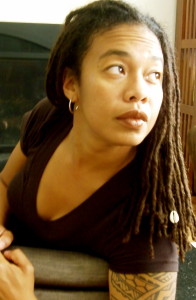 Prof. Janet C. Mendoza Stickmon, author of Midnight Peaches, Two O’clock Patience and Crushing Soft Rubies, is a teacher, writer, and performer. Stickmon has taught ethnic studies, social justice, history of Christianity, spoken word and algebra at Salesian High School in Richmond, CA for several years. She is currently a professor of Humanities at Napa Valley College, teaching Filipina/o-American Heritage, American Mind I and II, and Intro to Africana Studies. In addition to developing new ethnic studies curriculum over the past seven years, Prof. Stickmon is also leading a collaborative effort between the Humanities Department faculty and the Associated Students of Napa Valley College to open a cultural institute on campus in 2014.
Prof. Janet C. Mendoza Stickmon, author of Midnight Peaches, Two O’clock Patience and Crushing Soft Rubies, is a teacher, writer, and performer. Stickmon has taught ethnic studies, social justice, history of Christianity, spoken word and algebra at Salesian High School in Richmond, CA for several years. She is currently a professor of Humanities at Napa Valley College, teaching Filipina/o-American Heritage, American Mind I and II, and Intro to Africana Studies. In addition to developing new ethnic studies curriculum over the past seven years, Prof. Stickmon is also leading a collaborative effort between the Humanities Department faculty and the Associated Students of Napa Valley College to open a cultural institute on campus in 2014.
Stickmon is the founder and facilitator of Broken Shackle Developmental Training—a program that promotes the use of healing techniques to help reduce the effects of internalized racism and has done workshops for women’s resource centers and conferences in the Bay Area. As a member of the Napa Valley Ethnic Studies Advocates, Stickmon delivers collaborative presentations with students, encouraging the integration of ethnic studies into the K-12 curriculum
Janet Stickmon’s memoir, Crushing Soft Rubies, has been used as a course textbook at U.C. Berkeley, San Francisco State University, Santa Rosa Junior College and Gavilan College. She is also a spoken word artist who has performed at several venues across the country. Through her literature and performances, she explores issues of love, motherhood, resilience, ancestral connection, and joy. Her latest book, Midnight Peaches, Two O’clock Patience is a collection of essays, poems, and short stories on the many dimensions of self-love. The text serves as a self-help book for women and men interested in tapping into the sacred feminine to explore issues of spirituality, ethnic identity, sexual freedom, self-care, and motherhood. Midnight Peaches, Two O’clock Patience has been used as a course textbook in colleges, universities and high schools. One of most well-known selections from this text is entitled, “Blackapina” and was featured in Positively Filipino magazine.
Stickmon holds a Master’s of the Arts Degree in Ethnic Studies from San Francisco State University, a Master’s of the Arts Degree in Religion and Society from the Graduate Theological Union in Berkeley, and a Bachelor’s of Science Degree in Civil Engineering from the University of California, Irvine. Her work has influenced thousands of adults and adolescents for the last eighteen years.
Ananda Ilcken
Ananda Ilcken is a Curriculum Manager for the non-profit, enrichment program, Woodcraft Rangers. In this position, Ananda is 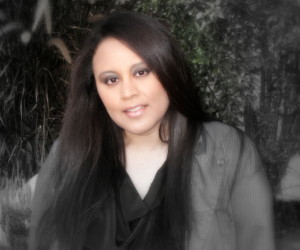 responsible for insuring Woodcraft Rangers’ 300 plus field instructors have an engaging and inspiring library of expanded learning curriculum to choose from. With content areas spanning from Video Production to Mariachi to Science; in locations that culturally diverge as far apart as Monterey Park and South Los Angeles, Ananda has utilized her education in racial identity models and her experience as an African-American Dutch-Indonesian, to guide her through writing curriculum that meets the interests of Woodcraft Rangers’ expansive student population. As curriculum Manager, Ananda supervises a team of writers that she leads through the hurdles of creating engaging project based learning activities for Woodcraft Rangers’ diverse population of 6000 plus students a day as well as through the challenges of writing for the agency’s equally diverse group of field instructors.
responsible for insuring Woodcraft Rangers’ 300 plus field instructors have an engaging and inspiring library of expanded learning curriculum to choose from. With content areas spanning from Video Production to Mariachi to Science; in locations that culturally diverge as far apart as Monterey Park and South Los Angeles, Ananda has utilized her education in racial identity models and her experience as an African-American Dutch-Indonesian, to guide her through writing curriculum that meets the interests of Woodcraft Rangers’ expansive student population. As curriculum Manager, Ananda supervises a team of writers that she leads through the hurdles of creating engaging project based learning activities for Woodcraft Rangers’ diverse population of 6000 plus students a day as well as through the challenges of writing for the agency’s equally diverse group of field instructors.
On Being “Jamish”: A New Memoir About a Jamaican-English Girl
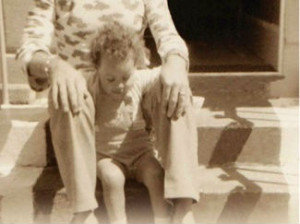 I’m super excited about this memoir by Salena Godden called Springfield Road. Godden is the daughter of a white go-go dancer and a black jazz musician who is absent as she grows up. She recalls a childhood that many curly-haired kids will recognize particularly those who lived in isolated communities where they were the only “diversity” of the town.
I’m super excited about this memoir by Salena Godden called Springfield Road. Godden is the daughter of a white go-go dancer and a black jazz musician who is absent as she grows up. She recalls a childhood that many curly-haired kids will recognize particularly those who lived in isolated communities where they were the only “diversity” of the town.
Godden is a British, poet and performer who lives in London. The BBC has called her the “doyenne of the spoken word scene.” –Heidi Durrow
I was the only brown girl in the playground, definitely — in the village, actually. And, of course, being mixed race was really unusual. People didn’t really know what to call me. Half-caste, I suppose, but that felt like half of something and I’m definitely a whole Salena. There is not half of anything.–Salena Godden
You can listen to her NPR interview here. Get the book here.
Little White Lie Film Receives Rave Reviews!
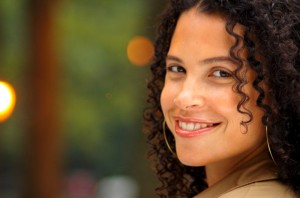 The Mixed Remixed Festival is very excited to co-host in collaboration with Be’chol Lashon a special Q&A with filmmaker Lacey Schwartz following the 11/30 2:20pm screening of Little White Lie at the Music Hall 3 in Beverly Hills, CA. Tickets are available for purchase on-line and at the box office.
The Mixed Remixed Festival is very excited to co-host in collaboration with Be’chol Lashon a special Q&A with filmmaker Lacey Schwartz following the 11/30 2:20pm screening of Little White Lie at the Music Hall 3 in Beverly Hills, CA. Tickets are available for purchase on-line and at the box office.
Learn more about this amazing film that has received rave reviews across the board! Do we hear Oscar?–Heidi Durrow

“‘A lot of personal documentaries cover secrets,’ said Jay Rosenblatt, program director of the San Francisco Jewish Film Festival. ‘Self-indulgence is a big problem with personal documentaries, but I think the secret in ‘Little White Lie’ kept it from going in that direction — the narrative thrust keeps you engaged.'” – Felicia R. Lee / The New York Times

“Holmes’ criterion for festival submissions is great black films, against the grain. Certainly that describes Brooklyn filmmaker Lacey Schwartz’s ‘Little White Lie’, a personal documentary about family secrets and the power of truth-telling.”
– A.D Amorosi / The Inquirer

“It goes without saying that Jewish identity, in all its forms, is one of SFJFF’s overriding themes. The world premiere of Lacey Schwartz’s first-person documentary ‘Little White Lie’, closes the festival with an utterly unique angle on the topic.” – Michael Fox / KQED Arts

“Filmmaker Lacey Schwartz explores how race, culture and family shape a person’s sense of identity in this documentary and personal detective story.” – Anita Katz / The Examiner
Los Angeles: Little White Lie Screening & Mixed Remixed Festival 11/30
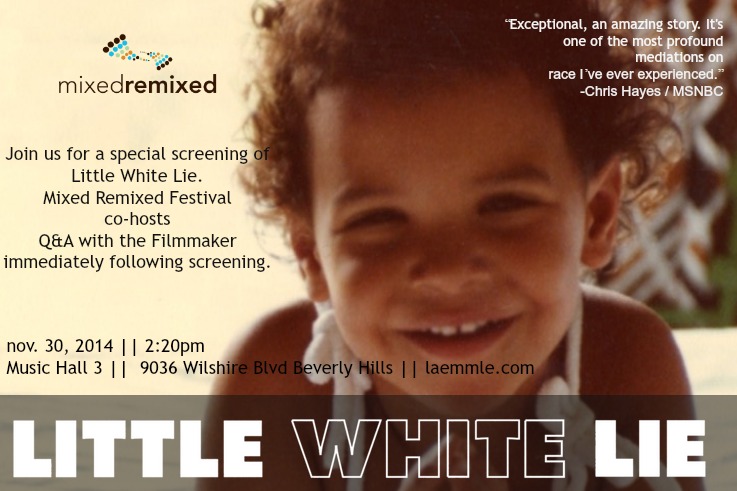 We are super-excited to announce our collaboration with Be’chol Lashon, a non-profit organization that works around
We are super-excited to announce our collaboration with Be’chol Lashon, a non-profit organization that works around
racial ethnic and cultural diversity in the Jewish community, for the amazing documentary film, Little White Lie.
Little White Lie, tells filmmaker Lacey Schwartz’s story of growing up in a typical upper-middle-class Jewish household in Woodstock, NY, with loving parents and a strong sense of her Jewish identity — despite the open questions from those around her about how a white girl could have such dark skin. It’s an incredibly moving film that has received rave reviews and will be screening for a limited run in Los Angeles.
Please join us Nov. 30, 2014 for the 2:20pm show. The Mixed Remixed Festival is proud to co-host a Q&A with filmmaker Lacey Schwartz moderated by Festival fave Aaron Samuels. Tickets can be purchased on-line or at the box office. Don’t miss this!–Heidi Durrow
[youtube]http://youtu.be/qeLEgPJGIrQ[/youtube]
Everybody Loves Hapa
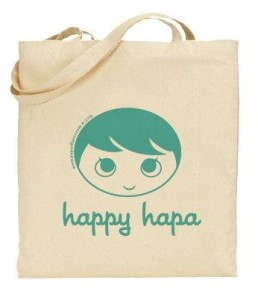
We caused a little firestorm over on Facebook when we asked this question: “Words you’re cool with using for mixed people: 1) mixed; 2) hapa; 3) mutt; 4) biracial; 5) potato; 6) Heinz 57; 7) zebra; 8) mulatto. Have I missed any?”
Below are some of the many and varied responses. But it was pretty clear that everybody seemed to be okay with Hapa. How about you?
- A mulatto is a mule – a cross breed between donkeys and horses. Mules are sterile. Only 1 in 144,000 can reproduce.
It’s a livestock term used for slaves of African descent that also had European ancestry.
It’s a slavery term and it’s just as bad as saying nigger.
I wrote the word nigger in this post, without quotes, and intentionally repeated it because the word mulatto makes me just as angry to hear and see in print, flippantly.
“Mulatto” is “Nigger” for Mixed folks like us. It serves the same purpose of branding us as chattel slave property, just with a “twist.” - Not cool with derogatory ones like ‘mutt’.
- 2, 4, 5, 6, 7, and 8 should go…the is only 1 race…the human race, and we are proof that this divisive cramp is a waste of time. I have never of heard “potato”.LOL Anywho, there are so many mixtures, and some of these terms only refer to black and white mixes.
- I can’t like this
- I really appreciate all the voices and comments on this. I think the consensus is lose “mutt” for sure. And BTW I adopted “potato” via writer @Lori Tharps who also has called her Spanish/Black kids “spa-negroes” — love her! More on that story here: http://www.huffingtonpost.com/heidi-w-durrow/interracial-relationships_b_1514896.html
- How about human beings
- My brother loves Halfrican. I can do Afro-Semite or Hegro.
- And hell no to mulatto!!!
- Zebra??? No way!!!
- I think anything that is commonly used in the animal world (zebra, mutt, mulatto) is probably better left there. Even “mixed” sometimes sounds wrong–I usually associate that word with “breeds” of animals. And cocktails. But I understand that word is more acceptable.
- I don’t mind mutt, but I mind when people say bitch. I also like to call myself American and human.
- Best is: ‘Neither Both’
- Looks like hapa is the one term everyone agrees with. True?
- Understand 🙂
- I tell people I”m a BLEND of Black, White & Native American. I also use the word MULTICULTURAL. I detest the word Mulatto.
- multiracial
- What an awesome question. Keeping dialogue open is the most important part of all. Personally, when I was confronted with the inevitable curiosity of my peers (“What are you?”), and was questioned about my ethnic identity, my mom told me to tell them my name. If pressed, I would give them facts. Because I was proud. But as people started placing their own perspective on whatever those facts were, I made them regard me the same way as I viewed them: as a human. I love my family and my heritage, but it doesn’t define everything about me. It’s not expected of any other person. So I claim my name as an individual first, and only.
- Callaloo
- I think it is more about the intention of the word, if I don’t give it power, it can’t control me. People are going to say hurtful things but I’m not going to let their ignorant comment ruin silly words I ENJOY using to explain my unique upbringing.
- Don’t get or like these. Personally love Multi- culti. But long long ago used oreo.
- My son likes, ‘blend
- I use the term mullato/a academically but not socially. And I use mutt in jest but would never allow someone else to refer to me that way.
- Someone would knock my ass out if I went outside and said mulatto.
- My daughter uses Halfrican.
- hapa <3
- A potato what on earth haha
- A potato flew around my room. Lol I never heard that term before potato.
- lol @ mulatto being socially acceptable.
- Lose the mutt.
- I can’t stand mulatto when it is used in America. Or mutt. Ugh. I usually stick with mixed or biracial.
- There are some derogatory slurs, but they do not deserve to join this listing.
- Hapa or mixed are probably my top choices. My nephew and niece use “Chrislim” to describe themselves, but this is more religious than “racial” as they have one parent who was brought up Christian and another who was brought up Muslim, hence Chrislim…
- I prefer High Yellow… 😉
2014 Festival Recap: Short Film Program

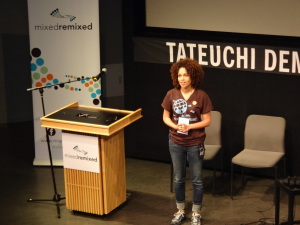 The short film program was a huge hit at the 2014 Mixed Remixed Festival. We screened films by emerging filmmakers who are extremely talented. The program was followed by a Q&A with the filmmakers and actors (Max Faugno, Jeffrey Moline, Aaron Samuels) involved and was led by the ever-awesome Festival Producer and Planner, Jennifer Frappier. The complete film line-up included:
The short film program was a huge hit at the 2014 Mixed Remixed Festival. We screened films by emerging filmmakers who are extremely talented. The program was followed by a Q&A with the filmmakers and actors (Max Faugno, Jeffrey Moline, Aaron Samuels) involved and was led by the ever-awesome Festival Producer and Planner, Jennifer Frappier. The complete film line-up included:
The United Colors of Amani, dir. Amani Starnes (Running time 15 minutes)
Ozzy & Harry dir. Jeffrey Moline (Running time 6:25 minutes)
Tender Love dir. Joseph Hernandez-Kolski (Running time 5:17 minutes)
Covered in Grass dir. Celso White & Matt Malis (Running time 4:45 minutes)
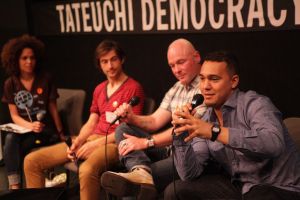
The United Colors of Amani
In the tradition of Robert 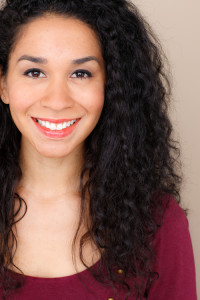 Townsend’s Hollywood Shuffle, the web series “The United Colors of Amani,” explores Amani’s uncomfortable racial adventures in Hollywood. Amani, an ethnically ambiguous performer, has dealt with the “What are you question” her whole life. But what does it mean to be black, white, and everything in between as she navigates the entertainment industry and life in LA? “The United Colors of Amani,” a with sociological undertones, sheds light on the uncomfortable, awkward, and outrageous constructions of race permeating showbiz. It will evoke laughter, discomfort, and outrage. Despite the specific circumstances of the protagonist’s journey through the big bad world of Hollywood, viewers will be surprised to find that they, too, can relate on some level to the identity politics and interpersonal catastrophes highlighted in “The United Colors of Amani.”
Townsend’s Hollywood Shuffle, the web series “The United Colors of Amani,” explores Amani’s uncomfortable racial adventures in Hollywood. Amani, an ethnically ambiguous performer, has dealt with the “What are you question” her whole life. But what does it mean to be black, white, and everything in between as she navigates the entertainment industry and life in LA? “The United Colors of Amani,” a with sociological undertones, sheds light on the uncomfortable, awkward, and outrageous constructions of race permeating showbiz. It will evoke laughter, discomfort, and outrage. Despite the specific circumstances of the protagonist’s journey through the big bad world of Hollywood, viewers will be surprised to find that they, too, can relate on some level to the identity politics and interpersonal catastrophes highlighted in “The United Colors of Amani.”
Amani Starnes is a multiracial actress, writer, producer, and singer. She graduated from Yale, where she studied Theater and African American Studies. Amani is the face of several national television commercials and a member of Tim Robbins’ Actors’ Gang. She also sings, choreographs, and stars in independent films, plays, concerts, music videos, and rock operas.
Ozzy & Harry
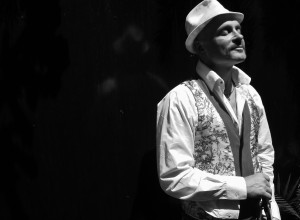 A biting satire on Conservative American Family Values “Ozzy and Harry” (a play on “Ozzy and Harriet”). Features Ozzy, a closeted, conservative Mixed race business executive and Harry his Nordic spouse and homemaker are trying to raise Pumpkin, their Latino son in a world that only existed on their television sets. Pumpkin tries to pull the wool from over his parents eyes by confronting the family dynamic of two fathers. Shot in 2003 in glorious black and white “Ozzy and Harry” reflects rotten core at buying into the American Dream, through apathy, consumerism and simply the need to be right. It illustrates how we lose our uniqueness in chasing it.
A biting satire on Conservative American Family Values “Ozzy and Harry” (a play on “Ozzy and Harriet”). Features Ozzy, a closeted, conservative Mixed race business executive and Harry his Nordic spouse and homemaker are trying to raise Pumpkin, their Latino son in a world that only existed on their television sets. Pumpkin tries to pull the wool from over his parents eyes by confronting the family dynamic of two fathers. Shot in 2003 in glorious black and white “Ozzy and Harry” reflects rotten core at buying into the American Dream, through apathy, consumerism and simply the need to be right. It illustrates how we lose our uniqueness in chasing it.
JGM is a singer/songwriter, musician and filmmaker. He uses his art and life to promote a solidarity of enlightened common people. JGM was farm raised in MN and lives in West Hollywood. JGM hopes you enjoy his film Ozzy and Harry.
Tender Love
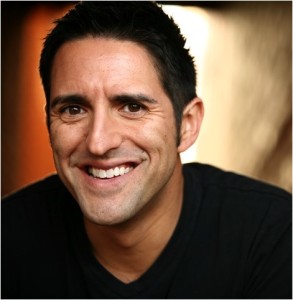 As a writer who comes from a mixed background, I think my perspective is slightly different. I think my comedy tends to reflect that. This comedy short is a commentary on technology and relationships, not specifically about the mixed experience, but I think it’s a universal topic. My goal is to continue to speak about our experience in ways that demonstrate a positive direction in which I think we need to move as a society, where we are not on the outskirts of the mainstream. We need to redefine what that mainstream looks like.
As a writer who comes from a mixed background, I think my perspective is slightly different. I think my comedy tends to reflect that. This comedy short is a commentary on technology and relationships, not specifically about the mixed experience, but I think it’s a universal topic. My goal is to continue to speak about our experience in ways that demonstrate a positive direction in which I think we need to move as a society, where we are not on the outskirts of the mainstream. We need to redefine what that mainstream looks like.
Joe Hernandez-Kolski is a spoken word poet and comedian. His first short film, “Afterschool’d” was an NBC Comedy Short Cuts finalist. He has written several hip-theater shows, both in the solo format and with his partner Joshua Silverstein under the comedy moniker “So Fresh & So Clean.” His first solo show, “You Wanna Piece of Me?” was recently published by the University of Michigan press as part of an anthology entitled, “Say Word: Voices of Hip-Hop Theater.”
Covered in Grass
 The film is a video adaptation of a poem that examines a shared history of oppression between the narrator’s Black heritage and Jewish heritage.
The film is a video adaptation of a poem that examines a shared history of oppression between the narrator’s Black heritage and Jewish heritage.
Aaron Samuels, raised in Providence, Rhode Island by a Jewish mother and a Black father, is a Cave Canem Fellow and a nationally acclaimed performer. His work has been nominated for a Pushcart, featured on TV One’s Verses & Flow, and has appeared in many journals including Tidal Basin Review and Muzzle Magazine.
- « Previous Page
- 1
- …
- 28
- 29
- 30
- 31
- 32
- …
- 41
- Next Page »





